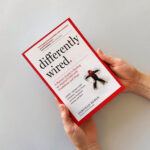Buy the ebook now for a special Nurses Week price (available until 5/12)!
$1.99 $14.95
Amazon » Barnes & Noble » iBooks » Kobo » Google Play »
“The Third Most Dangerous Profession,” excerpted from Alexandra Robbins’ New York Times bestseller The Nurses.

DeAnne Dansby was a travel ER nurse in Sacramento when she experienced the worst patient assault of her career. Medics brought in a hypothermic, unresponsive homeless man whom Dansby and a student nurse were able to revive. Dansby left the patient with the student for a moment. When she returned, the patient had backed the student into a corner. Dansby rushed to protect the girl, holding out her arm so the student could get behind her. The man ripped out his IV and lunged at Dansby, tackling her so hard that when they fell through the doorway, her head banged hard onto the floor. Feeling an excruciating snap in her neck, Dansby screamed. The man pulled her scrub pants down, bit her inner thighs, and was about to attempt to rape her before several of Dansby’s coworkers were able to wrestle him off her.
Shaken and injured, Dansby, crying, told the ER supervisor that she had to leave. “The ER is full and we have no one to take your place,” the supervisor told her. “You have to keep working.” Because she was able to stand up, Dansby felt she had no choice but to complete her twelve-hour shift.
When she finally was able to see a doctor, Dansby, a mother of two, learned that the man had fractured her neck, severing nerves that ran to her left deltoid and bicep. More than four years after the attack, Dansby still can’t feel her left arm or look straight up. She has pain and difficulty swallowing. The surgery to correct the injury was so extensive that it caused her voice to change irreversibly. She has an eight-inch scar because her doctor had to clean out so many bone fragments. “I see that scar every day,” Dansby said. “And I see him every time I close my eyes.” As far as Dansby knows, her assailant is still free.
When Dansby told her department manager she wanted to call the police, the manager said, “If you are going to work for this hospital, you are not going to press charges.” Afraid of losing her job, Dansby agreed. She knew the hospital wasn’t bluffing. Two security officers who had come to Dansby’s assistance allegedly had been fired on the spot for putting their hands on a patient. Dansby told only the U.S. Occupational Safety and Health Administration (OSHA) and The Joint Commission about the attack. Two months later, she said, the hospital fired her anyway, claiming she couldn’t do her job properly.
Today, Dansby is a nurse case manager for a large insurance company. She can’t work in hospitals, her true passion, because she can no longer lift anything heavier than a gallon of milk. Certainly, the hospital had reason to keep the assault quiet. Violence in the ER could attract negative press, deter future patients, and damage the hospital’s standing in the community. But, like Molly, Dansby believes that if administrators couldn’t protect her from the assault, they should have at least assisted her in the aftermath. “The hospital didn’t stand behind their personnel. When I scanned my badge and turned on that computer, I was nothing but a number,” Dansby said. “Nurses put their lives in danger every time they walk through that hospital door.”
It is horrific enough that sick or desperate patients attack the people who joined this demanding profession specifically to help them. But the ways some hospitals treat nurses who are victims of assault may be more chilling than the attacks themselves.
Violence against nurses, also called “ward rage,” is on the rise. Nearly nine out of ten ER nurses say they were assaulted at work during the past three years, according to an Emergency Nurses Association national survey. The same survey found that one-quarter of ER nurses were physically assaulted more than twenty times in that period and one-fifth of nurses each had been verbally abused more than 200 times. Several nurses told me that every nurse they know has been physically assaulted by a patient.
Experts have attributed the rise in violence to several factors that have nothing to do with individual nurses. Patients grow frustrated with short-staffed ERs that can’t attend to them instantaneously when wait times are long. Some drug-seeking patients become irate when nurses—merely the messengers—tell them they can’t have a prescription. Other patients are drunk or come straight from crime or accident scenes. Caregivers might dump patients with mental health issues into ERs unnecessarily. And hospitals like Pines don’t always have adequate security measures to protect their staff.
Patients often punch, kick, bite, shove, hit, scratch, or strangle nurses, but typically only the hospital shootings hit the news. Bureau of Labor Statistics data indicate that nursing is the country’s third most dangerous profession behind police officers and correctional officers, and OSHA admits that “the actual number of incidents is probably much higher” than we know. Nurses are approximately sixteen times more likely than employees in other professions to be assaulted at work.
Patients’ family members are sometimes the aggressors. In a high-profile case, Douglas Kennedy, son of the late senator Robert F. Kennedy, attempted to take his newborn son out of the hospital for some “fresh air.” The hospital had not discharged the infant, however, and concerned maternity nurses simply saw a man trying to exit the ward without authorization. When two maternity nurses tried to block the doorway, Kennedy assaulted them, according to charges filed by the nurses. “I wanted to make sure the baby was safe and secure,” one of the nurses told the Today show. “He brought his leg up and kicked me, and I went flying through the air.” Kennedy went downstairs, where he was stopped by security. He was subsequently charged with harassment and endangering the welfare of a child.
Many nurses said that, as in Dansby’s case, superiors tell them not to report the violence. Nurses who don’t keep silent—by complaining about the incident, reporting it, or seeking help—might be fired. That’s what happened to Tammy Mathews, an ER nurse in Alabama, after a drunk patient spit in her face and choked her until she couldn’t breathe. Her hospital tried to convince her to drop her assault charges. When she refused, the hospital fired her.
Little wonder that 65 to 80 percent of assaults on registered nurses go unreported. Even the Department of Labor has warned that “incidents of violence are likely to be underreported, perhaps due in part to the persistent perception within the healthcare industry that assaults are part of the job.” This is precisely what a Massachusetts judge told a nurse when he threw out “her case against her attacker: Getting assaulted is part of the job. This attitude, which I’ll call the “shrug-it-off culture,” can make nurses feel that reporting an attack will reflect poorly on the nurse as an individual, as if the violence is a result of their own negligence or weakness. Partly because assaults are so common, the industry has conveyed that being attacked is acceptable. Because of this message, the violence goes unreported and unchecked, and continues to rise.
Meanwhile, multiple studies reveal that hospitals that encourage nurses to report violence have fewer assaults than other healthcare institutions. Even nursing organizations perhaps unwittingly contribute to the view that nurses may be partly to blame. In a Preventing Workplace Violence brochure, the American Nurses Association lists under the heading “Characteristics of Victims and Perpetrators” the following statement: “Victims are often untrained staff nurses or newly hired nurses.” Tell that to Molly, who had been a nurse for several years when she was assaulted. Or Jeaux Rinehart, former president of the Washington State Emergency Nurses Association. In 2007, a drug-seeking patient bashed Rinehart in the head with a billy club, breaking his cheekbone. Rinehart, 51, had worked in ERs for three decades. Nurse assault is “actually getting worse,” he told MSNBC.com.
Not all assailants are patients who are mentally compromised. “I don’t have patience for the completely lucid adult patients who abuse us,” said a Maryland medical/surgical nurse whom patients have hit, kicked, and pinched so hard she developed bruises. “I’ve had trays, pills, and cups thrown at me. There was nothing done about any of these things. I told my manager and the general message I received was ‘This is the way it is. It’s just part of the job.’ You can call security and they’ll maybe tell the patient to stop, and then they’ll go back downstairs. There are so many restrictions that make it hard for nurses to stay safe. You can’t restrain a patient who is mentally competent, unless they’re hurting themselves. Police won’t arrest them because they need treatment in the hospital. If you assaulted a police officer or any other professional on the job, you’d be in big trouble. But nurses are assaulted every day and there is little to no protection or justice.”
Never mind that many hospitals aren’t providing counseling or other resources to help assaulted nurses cope with the distress that lingers after an attack, including insomnia, flashbacks, anxiety, and other symptoms of post-traumatic stress disorder. In nearly three-quarters of assaults against ER nurses, hospital management never even responds to queries from nurses who are attacked (according to those nurses). “They want the nurses to ignore it, partly because they don’t want the liability, but mostly because people outside of nursing just assume since the patient is elderly or mentally ill, they don’t know any better. Right. Let me sit here and get my ass kicked because ‘she doesn’t know what she’s doing and doesn’t mean it,’ ” Molly said. In hospitals, the shrug-it-off culture forces nurses to endure treatment that would not be tolerated in any other profession.
More assaults occur at acute-care hospitals than any other workplace, according to the Bureau of Labor Statistics, and the majority of these healthcare assaults target nurses. Yet many hospitals don’t train nurses how to manage violent people. As an Emergency Department chairman told me, “My residents get more training than my nurses do,” even though nurses are assaulted more frequently than doctors because they are more often at the bedside.
Hospital administrators aren’t the only people dismissing the victim. In 2012, Tennessee state senators debated a bill to strengthen penalties for people who assault healthcare workers. Senator Ophelia Ford gave an odd, rambling statement in which she complained about “mean and hateful” nurses during her own medical care and not getting a private room. She concluded, “To come before this committee and ask for this kind of thing is ludicrous.” The bill passed the committee anyway with a five-to-four vote, but attacking a nurse is still only a misdemeanor in Tennessee and twenty other states.
When workplaces put measures in place to protect their staff, the results can be impressive. The Veterans Administration Medical Center in Portland, Oregon, installed a computerized database to identify patients with a history of violence, so that staff members would know to take additional safety measures, according to the National Institute for Occupational Safety and Health. The program helped to decrease the number of violent attacks by an astounding 91.6 percent.
The prejudice against nurses is alarming and dangerous. In 2006, Brenda Coney, a patient in Jacksonville, Florida, pulled a knife on another patient. The hospital called the sheriff’s office, which filed a police report. Two months later, when Coney slapped a nurse twice in the face, the hospital ignored the incident. Later that same month, Coney returned to the hospital, where she shot and killed a pharmacist.
If nurses are ignored, blamed, or laid off when patients assault them, what happens to other hospital staff members? Consider the case of Paul Matera, who worked in Washington, DC. A trauma patient who had been stabbed punched Matera in the back of the neck, rupturing several discs. Matera, who continued treating the patient almost immediately, needed three surgeries (covered by workers’ compensation insurance) to repair his own injuries. He didn’t press charges because, he said, “He was a young guy under the influence of alcohol and cocaine and under duress from his own trauma, so I felt he likely did not know what he was doing.” But Matera wasn’t a nurse. He was an ER doctor. So his hospital didn’t fire him or fault him for the attack. Instead, Dr. Matera received an entirely different sort of response: The American Medical Association gave him the rarely awarded Medal of Valor for “courage under extraordinary circumstances in nonwartime situations.”





No Comments